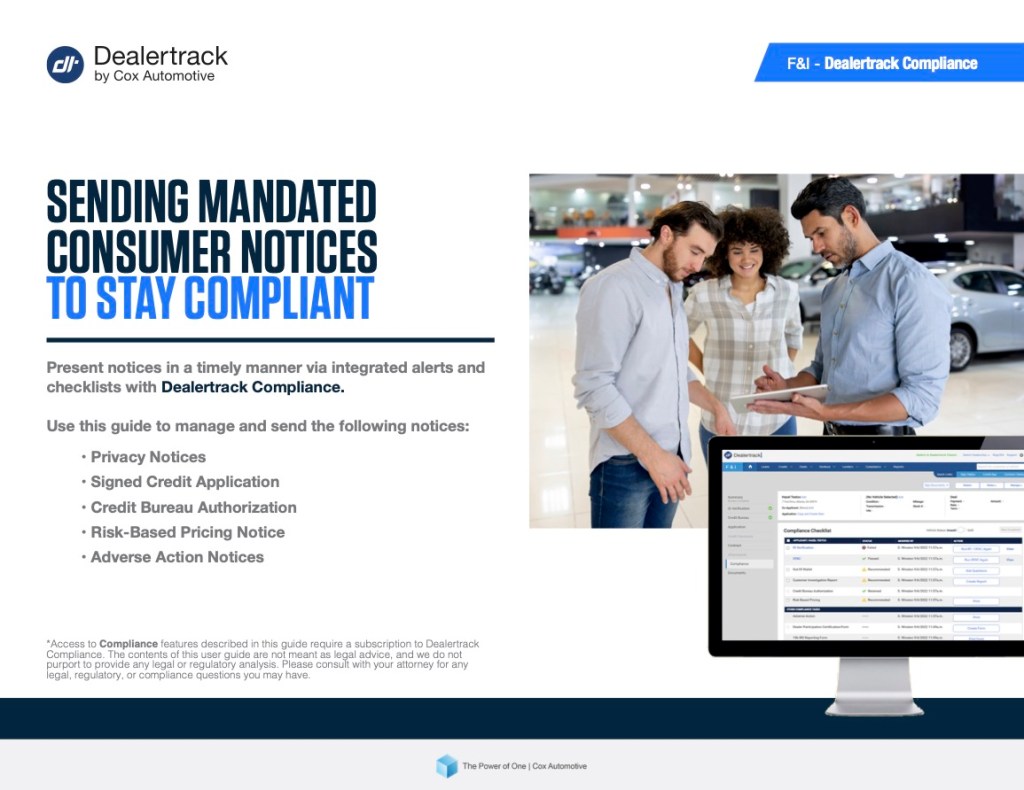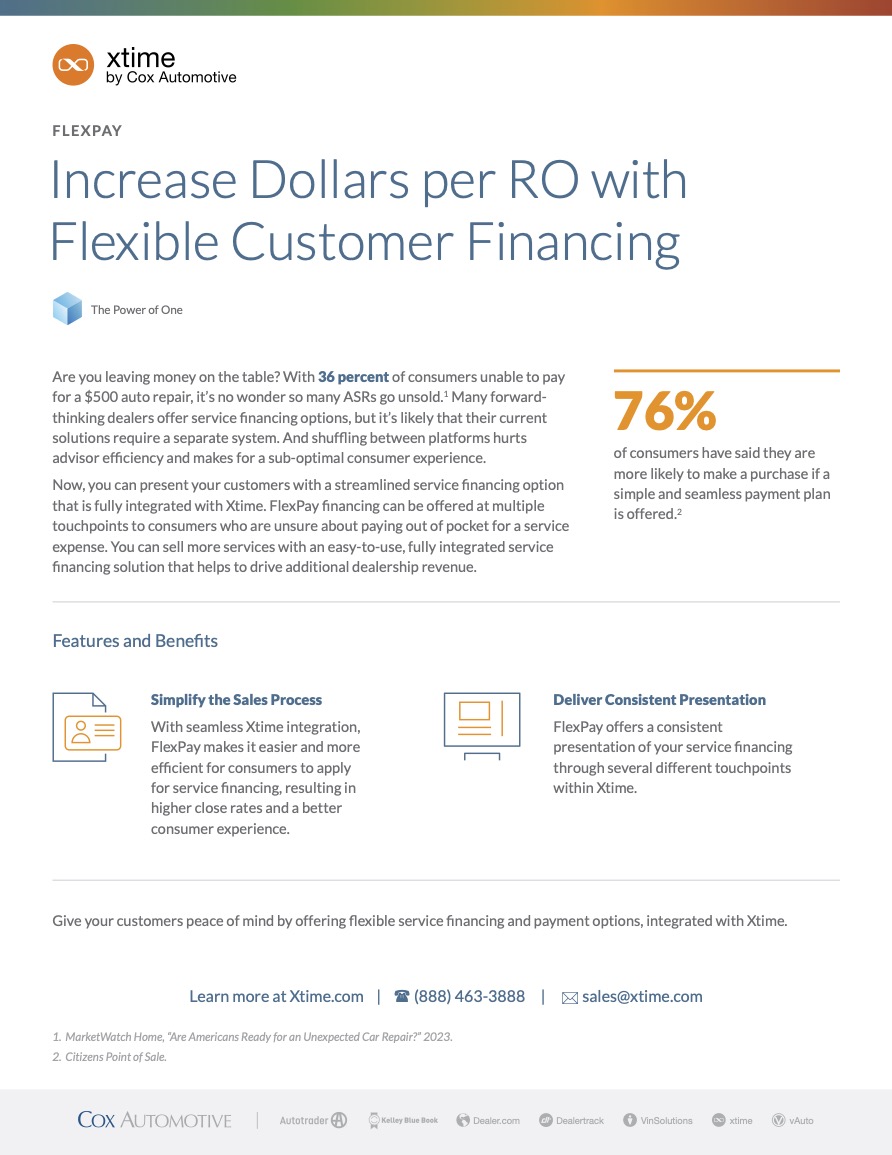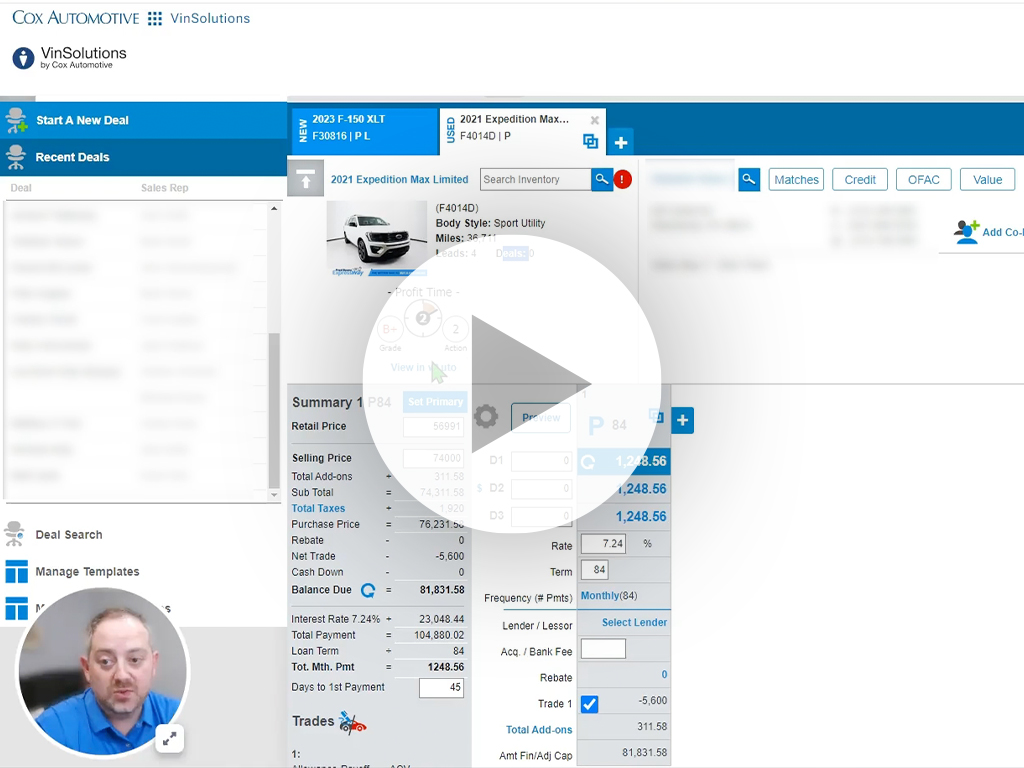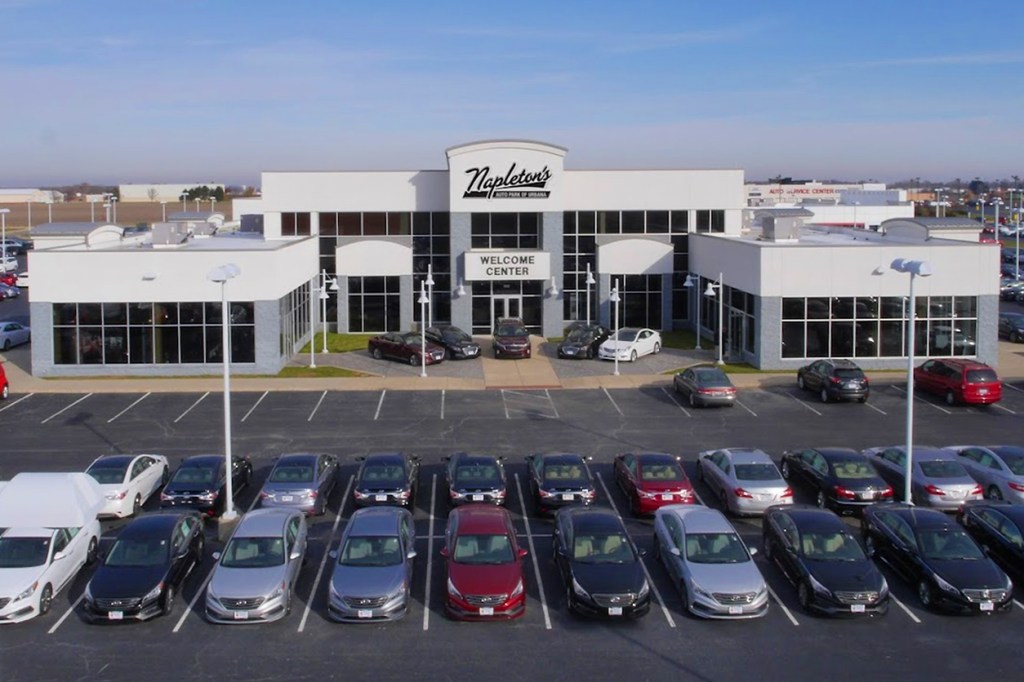Utilize this guide to manage and send notices in a timely manner via integrated alerts and checklists with Dealertrack Compliance.
Sending Mandated Consumer Notices to Stay Compliant


Utilize this guide to manage and send notices in a timely manner via integrated alerts and checklists with Dealertrack Compliance.

Are you leaving money on the table? With 36 percent of consumers unable to pay for a $500 auto repair, it’s no wonder so many ASRs go unsold.1 Many forwardthinking dealers offer service financing options, but it’s likely that their current solutions require a separate system. And shuffling between platforms hurts advisor efficiency and makes for a sub-optimal consumer experience.
Now, you can present your customers with a streamlined service financing option that is fully integrated with Xtime. FlexPay financing can be offered at multiple touchpoints to consumers who are unsure about paying out of pocket for a service expense. You can sell more services with an easy-to-use, fully integrated service financing solution that helps to drive additional dealership revenue.
of consumers have said they are more likely to make a purchase if a simple and seamless payment plan is offered.2
Simplify the Sales process
With seamless Xtime integration, FlexPay makes it easier and more efficient for consumers to apply for service financing, resulting in higher close rates and a better consumer experience.
Deliver Consistent Presentation
FlexPay offers a consistent presentation of your service financing through several different touchpoints within Xtime.

In the fast-paced world of automotive retail, efficiency, customer satisfaction, and profitability are paramount. With the advent of advanced software solutions, Kia dealerships now have the tools they need to excel in these areas. The certified suite of Xtime products—Schedule, Engage, and Inspect—stands at the forefront of this transformation. In this blog post, we’ll explore how these cutting-edge tools enhance service operations for Kia dealers, drive customer loyalty, and significantly boost profitability.
Schedule: Driving Efficiency and Show Rates
The cornerstone of any successful service department is effective scheduling. Kia Schedule, part of the Xtime Suite, excels in this area by driving an impressive average show rate of 86 percent. This state-of-the-art scheduling tool not only ensures that appointments are booked efficiently but also enhances the overall customer experience by reducing wait times and streamlining service processes.
By leveraging Schedule, dealerships can:
Engage: Increasing Customer Retention
Customer retention is a critical metric for any dealership, and Xtime’s Engage tool has proven its worth in this arena. Kia customers who are checked in through Engage are 15 percent more likely to return for future services than those processed through traditional service write-ups. This tool transforms the check-in process, making it more interactive and informative, thus fostering stronger customer relationships.
Key benefits of Engage include:
Inspect: Boosting Service Recommendation Sales
Vehicle inspections are a vital component of after-sales service. Xtime’s Inspect tool empowers Kia dealers to perform thorough inspections and present clear, actionable recommendations to customers. This approach has led Kia dealers to average an impressive $82,000 per month in additional service recommendation sales. By using Inspect, dealerships can ensure that every vehicle receives a comprehensive check-up, and customers are fully aware of any necessary repairs or maintenance.
Benefits of using Inspect include:
Integration and Certification: A Seamless Experience
Xtime’s certification with Kia ensures full integration with the dealer management system (DMS) and other key platforms. This integration brings together scheduling convenience, clear service explanations, and complimentary multipoint inspections for every visit. The result is a cohesive, streamlined service experience that aligns perfectly with Kia’s Promise to Care.
Key integration benefits include:
Fulfilling the Promise to Care
Kia’s Promise to Care is more than just a slogan; it’s a commitment to providing exceptional service to every customer. Xtime’s suite of products helps dealers fulfill this promise by ensuring that every service interaction is handled with the utmost care and professionalism. From the moment a customer schedules an appointment to the time they drive away, their experience is marked by efficiency, clarity, and a focus on their needs.
In today’s competitive automotive market, having the right tools can make all the difference. The certified suite of Xtime products—Schedule, Engage, and Inspect—offers Kia dealers a powerful solution to enhance service operations, improve customer retention, and drive profitability. By integrating these advanced tools, Kia dealerships can fulfill their Promise to Care and achieve new levels of efficiency and customer satisfaction.
Ready to take your service operations to the next level? Discover the benefits of Xtime Suite for yourself and join the ranks of Kia dealers who are transforming their businesses with cutting-edge technology. Connect with us today to learn more and schedule a demo.

The VinSolutions Desking tool isn’t just for desking deals! Use it to see leads on a unit, negotiate with a customer, and stay productive when your showroom is busy. Here are a few suggestions to help you get the most of VinSolutions desking.

In the fast-paced automotive industry, time is money. And for sales managers at VinSolutions, efficiency is paramount. Today, we’re excited to share a quick tip that will revolutionize how you identify lease customers, turning a routine task into a strategic advantage.
Video Tutorial Overview
Our latest video tutorial offers a concise, step-by-step guide on utilizing the VinSolutions CRM to pinpoint customers on a lease in under two minutes. This streamlined process not only saves you valuable time but also unlocks a goldmine of business opportunities.
Why Focus on Lease Customers?
Lease customers represent a strong source of repeat business. By identifying these key individuals early, you can extend “early lease-end offers” that significantly boost your profits. Here’s why this strategy is a game-changer:
Automate and Customize with VinSolutions CRM
One of the standout features of VinSolutions CRM is its default process, which automatically starts emailing lease customers six months before their lease matures. However, personal outreach from your sales team can amplify the impact of these communications.
Customizing the Process
Tailoring this process to fit your dealership’s unique needs can yield even better results:
Ready to Transform Your Sales Strategy?
Watch Now and identify, engage, and convert lease customers in under two minutes!

When it comes to email marketing, you might have the best, most strategic campaign plan, the most expertly crafted email messages, and the perfect products and inventory to showcase to your audience. But it’s all for naught if your emails don’t actually get delivered.
The factors that affect email deliverability are more complex than you’d imagine. We’re here to help you “get the message” of the importance of email deliverability and master the subtle art of sending emails that your audience will receive.
What is Email Deliverability?
Email deliverability is the percentage of sent emails that see inboxes. As opposed to email delivery, which measures the number of emails that are successfully accepted by the recipient’s mail server (regardless of folder), email deliverability measures emails successfully sent to inboxes only.
When you view email marketing as a means of capturing the attention of current and potential customers, email deliverability makes all the difference. It’s an important measurement, especially when you consider that more than half of all people (52%) check their junk folders at most once per week, with 18% of those people checking less frequently and 5% never checking at all, according to DMA’s Consumer Email Tracker.
Also, emails that fail to find inboxes negatively impact the reputation of your business and marketing messages, merely by association with other unwanted spam content.
The Impact of Spam Emails
Spam mail is unsolicited email content that’s sent out en masse. It’s a term that’s become synonymous with doing something repeatedly to disturb others, and email providers go to great lengths to find and filter out spam messages.
Spam is the primary reason legitimate marketing emails go undelivered and the most obvious metric that mailbox providers use to identify emails that users don’t want. They do this by filtering unwanted messages through blocklists and spam filters.
When your emails are identified as spam, either by a mailbox provider or the recipients themselves, your future emails can be filtered into junk folders or blocked completely. Considering that a substantial number of people only check their junk folders a few times a year, that essentially means your emails aren’t being received or read.
The Value of Sender Reputation
Just as your business has a reputation among your customers, your emails have a reputation among mailbox providers and spam filters. Your reputation doesn’t just impact people’s perceptions of your business, it significantly impacts email deliverability. A good sender reputation can ensure email deliverability. A bad one will filter emails to spam folders.
The main contributor to sender reputation is subscriber engagement—a measurement of how your audience interacts with your emails. Other factors include spam traps, blocklists, feedback loops, and inbox placement data. However, positive sending behaviors and subscriber responses improve your chances of successful email deliverability.
There are three main types of sender reputation:
Restoring a damaged sender reputation can be difficult, so it’s always best to take a proactive approach in keeping up a positive sender reputation. You can do this by consistently monitoring your engagement metrics to pinpoint areas for improvement in your email sending practices, including:
Email Deliverability Best Practices
You don’t have to rely on chance or the complexities of mailbox protocols to ensure email deliverability. You can take email matters into your own hands with the following best practices:
Avoid Sending Emails Too Often
Email marketing is all about finding the right frequency and cadence for sending messages. It’s a balancing act between capturing your customers’ attention without annoying your audience. When the scales tip toward over-sending, your recipients may report your messages as junk.
Always monitor the number of emails you send, as well as the number of emails your customers receive. Avoid sending too many emails, especially over a short period of time, and reduce the frequency of emails for customers who rarely engage. This will ensure that a high rate of emails stay in your audience’s inboxes without being reported as junk.
Implement a Sunset Policy
Undelivered emails impact your metrics. When too many of your emails are identified as undelivered, they can trigger spam filters and send emails to junk folders, even for new recipients.
If a customer hasn’t engaged with your dealership in the past 90 – 120 days, avoid bombarding them with more communication and consider removing them from your email list or finding a better re-engagement method.
Segment Your Audience
When you send out emails that feel impersonal, recipients recognize them as mass marketing and they’re more likely to report emails as junk. Of course, that simple action can have a ripple effect that impacts the deliverability of all future emails. It’s the impact of pervasive spam emails.
To make your marketing messages more personal, divide your audience into groups based on set criteria such as behavior, history, interests, and geolocation. Then, tailor campaigns to each segment to add personalization and increase engagement among your audience.
Follow Legislation to the Letter of the Law
The United States government has implemented certain laws and regulations designed to protect consumer privacy and prevent unsolicited emails from being delivered to inboxes. This can seriously impact deliverability, especially if you fail to comply with every stated regulation.
To avoid potential legal concerns and email inbox delivery failures, it’s important to stay compliant with legislation governing commercial emails, including the CAN-SPAM Act. The CAN-SPAM Act establishes the requirements you must follow for sending commercial emails and gives your recipients the right to stop receiving emails.
The main dos and don’ts of the legislation include:
Send High-Quality Content
The best way to ensure email deliverability is to take matters into your own hands and send high-quality content. Consider the following best practices to ensure that your emails resonate with your audience:
Ensure Email Security
Mailbox providers can detect and verify emails that are sent from less-than-legitimate organizations. If an email fails to meet their high security standards, it gets filtered to spam folders. You can meet these high security standards by ensuring your emails meet the following security measures:
You work too hard on your email marketing campaigns to risk undeliverability issues. Pay attention to the factors that affect email deliverability, and find more success with your email metrics, engage with your audience, and bring in more buyers to your business.
To learn more about how you can make your email marketing campaigns more successful, contact your Performance Manager.

Auto dealers must continuously adapt and innovate to remain competitive, and one critical aspect is the employee experience in fixed operations. The Napleton Automotive Group, led by Danny Randolph, has leveraged Xtime technology and automotive repair estimate software to enhance service lane operations, improving efficiency, customer satisfaction, and overall business performance.
Implementing Xtime technology has revolutionized the way Napleton Automotive Group manages its service lane. By focusing on customer experience, efficiency, and profitability, the group has seen significant improvements in their operations.
Danny Randolph highlights the impact of these tools: “If they don’t have the answer to all my questions, they know someone who does. It’s always easy to get an answer in the right amount of time in order for us to make quick decisions.”
To fully understand the transformative power of Xtime technology for improving customer relations at Napleton Automotive Group, watch the clip below to hear about it in Danny Randolph’s own words.
One of the standout benefits of using Xtime technology and automotive repair estimate software is the improvement in customer engagement and retention. By recapturing declined services and generating additional repair orders (ROs), Napleton Automotive Group has seen a notable increase in revenue per RO. The ability to provide transparent and trustworthy service is a significant factor in building long-term customer relationships.
Another way Xtime has transformed service lane operations at Napleton Automotive is among the staff. Hear how more efficiencies in the service lane have also led to increased sales.
Incorporating Xtime technology and automotive repair estimate software into Napleton’s fixed operations has also facilitated data-driven decision-making. The technology provides insightful analytics that help the management team make informed decisions that enhance overall business performance. The ability to quickly access and analyze data has been crucial for making timely adjustments and improvements.
The comprehensive data provided by Xtime allows Napleton to stay ahead of the competition by identifying trends and adapting to changing customer needs swiftly.
For General Managers, Service Managers, and Fixed Operations Directors looking to replicate this success, the key lies in understanding and utilizing the full potential of Xtime technology. By doing so, businesses can not only enhance employee satisfaction but also drive operational efficiency and profitability.
Ready to transform your fixed operations? Learn more about how Xtime can elevate your business by exploring our detailed case study on Napleton Automotive Group here.
Don’t wait for your competitors to surpass you. Book a demo today and discover how Xtime can propel your business into the future of automotive service.

Back by popular demand… Guest Chip Thomas, Master Sales Trainer & Principal Consultant as well as Jade’s father! With Olympics fever happening across the USA and the world, hear what Chip and Jade had to share on how to win the gold in today’s times when it comes to automotive sales, reaching your goals, and planning for success in both business and in life.

Customer service is the cornerstone of a successful dealership. Automotive professionals understand that providing an exceptional experience is essential for retaining customers and driving sales. One surefire way to achieve this is by leveraging a robust Customer Relationship Management (CRM) system tailored to your dealership’s unique needs. A well-designed CRM can transform your dealership’s operations and significantly improve customer service.
The Role of CRM in Modern Dealerships
A CRM system is more than just a digital Rolodex; it’s a powerful tool that helps dealerships manage customer interactions, streamline processes, and enhance the overall customer experience. With the right CRM, you can track every customer interaction, from initial contact to post-sale follow-up, ensuring no opportunity slips through the cracks.
Flexibility and Customization with VinSolutions
Tynan’s Auto Group, a reputable dealership known for its exceptional customer service and wide range of vehicles, understands the importance of a CRM that adapts to specific workflows and business processes. At the heart of a superior CRM lies its ability to adapt to your dealership’s specific workflows and business processes. VinSolutions’ CRM offers unparalleled customization options, allowing dealerships to tailor the system to their unique needs. As KateLynn Bregar, Sales Manager and Internet Sales Director at Tynan’s Auto Group, aptly puts it, “Let’s be real: CRMs do basically the same thing, but what VinSolutions is able to do is customize to the Tynan’s way.” This level of customization ensures that your CRM works in harmony with your existing operations, enhancing efficiency and effectiveness across the board.
Real-World Applications: Tynan’s Automotive Group
Tynan’s Automotive Group has successfully utilized VinSolutions’ CRM to elevate their customer service. With features designed to streamline and personalize customer interactions, the team at Tynan’s can now meet their customers where they are—whether that’s through email, text, or phone calls. As Bregar notes, “People do not want to come into the dealership – they want to be emailed or texted or called.”
Comprehensive Customer Profiles
By integrating customer records directly into the CRM, VinSolutions enables dealerships to access a wealth of information about each customer, including vehicles of interest, trade-in details, customized sales proposals, and follow-up history. This comprehensive view allows sales teams to provide personalized service that meets each customer’s unique needs and preferences.
Efficient Communication
VinSolutions offers a diverse and dynamic way of communicating with customers, ensuring that information is provided effectively and efficiently. The CRM system supports multiple communication channels, enabling your team to stay connected with customers on their terms. This flexibility not only improves the customer experience but also increases the likelihood of closing deals.
Achieving High Customer Satisfaction
A better CRM doesn’t just streamline operations; it also directly impacts customer satisfaction. According to recent studies, 69% of consumers report being highly satisfied with the overall vehicle shopping and buying process when dealerships use advanced CRM systems. This high level of satisfaction is a testament to the power of a well-integrated, customer-centric CRM in enhancing the dealership experience.
The Power of Integration
One of the standout features of VinSolutions’ CRM is its ability to integrate with other essential dealership tools, such as Dealertrack. This integration allows for real-time data synchronization, reducing errors and ensuring that your team always has access to up-to-date information.
Maximizing Profitability
By integrating with tools that manage inventory, evaluate trade-in values, and present manufacturer incentives, VinSolutions’ CRM helps your dealership maximize profitability on every deal. This strategic approach to sales and inventory management ensures that you can offer competitive pricing while maintaining healthy profit margins.
The transformative power of a better CRM is evident in the success story of Tynan’s Automotive Group. VinSolutions has enabled them to provide superior customer service, streamline operations, and increase overall satisfaction among their clientele.
Ready to see how VinSolutions can revolutionize your dealership? Watch the full story of how VinSolutions helped Tynan’s Auto Group by clicking here .

Elevate Your Automotive Sales with Data-Backed Marketing Automation and a Powerful CRM
Leveraging data-backed marketing automation and a robust Customer Relationship Management (CRM) system can transform your strategy, ensuring your messages are not only seen but acted upon. In this exploration, we incorporate the seven proven industry best practices to optimize your email marketing efforts, driving engagement and boosting sales.
1. Leverage Automotive CRM Software for Precision Targeting
Automotive CRM software is the backbone of your successful email marketing campaign. It collects and analyzes vast amounts of data about your customers, including their buying behavior, preferences, and interaction history. By segmenting your audience based on this data, you can tailor your messages to meet their specific needs and interests, ensuring your messages are relevant and increasing the chances of conversion.
2. Utilize Car Leasing Software to Personalize Offers
Personalization is key to engaging your audience and making your messages stand out in crowded inboxes. Car leasing software integrated with your CRM can help you create highly personalized offers based on individual customer profiles. Whether it’s a lease renewal reminder or a tailored promotion for a new model, personalized emails foster stronger connections and drive repeat business.
3. Implement AI Automotive Solutions for Enhanced Automation
Artificial Intelligence (AI) is revolutionizing email marketing by enabling advanced automation and predictive analytics. AI automotive solutions can analyze customer data to predict future buying behaviors, allowing you to proactively send targeted emails that resonate with your audience. Automated workflows powered by AI ensure timely follow-ups and nurture leads through the sales funnel without manual intervention.
4. Enhance Customer Interaction with a CRM Virtual Assistant
A CRM virtual assistant can significantly enhance your email marketing efforts by handling routine tasks and providing real-time support. These AI-powered assistants can manage email responses, schedule follow-ups, and even assist in lead nurturing. By freeing up your sales team from repetitive tasks, a CRM virtual assistant allows them to focus on high-value activities that drive sales.
5. Optimize Content with Automotive Marketing Solutions
The content of your emails is just as important as the timing. Automotive marketing solutions offer tools to create compelling, visually appealing emails that capture attention. Use these tools to design templates that align with your brand, craft engaging subject lines, and include clear calls-to-action. A/B testing different versions of your emails can also provide insights into what resonates best with your audience.
6. Monitor and Analyze Campaign Performance
Continuous monitoring and analysis are essential for refining your email marketing strategy. Use the analytics features of your automotive CRM software to track key metrics such as open rates, click-through rates, and conversions. Analyzing this data helps identify what’s working and what’s not, allowing you to make informed adjustments to improve future campaigns.
7. Ensure Compliance with Data Privacy Regulations
Data privacy is a critical concern in email marketing. Ensure your campaigns comply with regulations such as GDPR and CAN-SPAM by obtaining explicit consent from recipients and providing easy opt-out options. Maintaining transparency and respecting your customers’ privacy builds trust and enhances your brand’s reputation.
Conclusion: Drive Success with Data-Driven Email Marketing
Implementing these best practices will help you harness the full potential of automated email marketing. By leveraging advanced automotive CRM software, personalizing offers with car leasing software, utilizing AI automotive solutions, and enhancing interactions with a CRM virtual assistant, you can ensure your messages reach the right audience and drive meaningful engagement. Continuous optimization and compliance with data privacy regulations will further solidify your strategy, positioning your dealership for long-term success.
Ready to Transform Your Email Marketing?
Discover how VinSolutions can take your email marketing to the next level. Learn more about our innovative solutions and see firsthand how our tools can drive engagement and boost your sales. Schedule a demo today and start transforming your email marketing strategy!
Download the PCG Research report on TargetPro and learn the benefits of data-backed marketing automation.